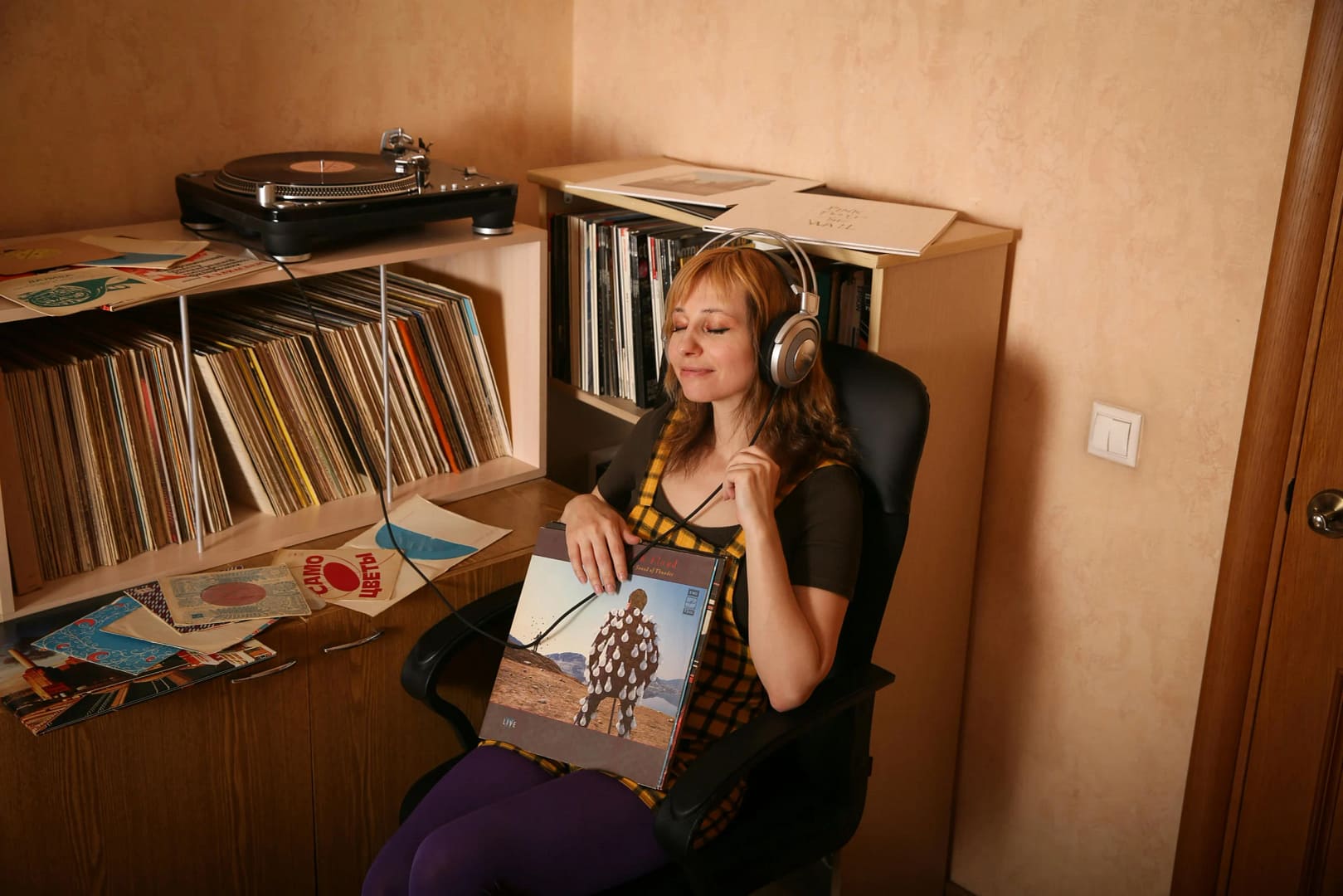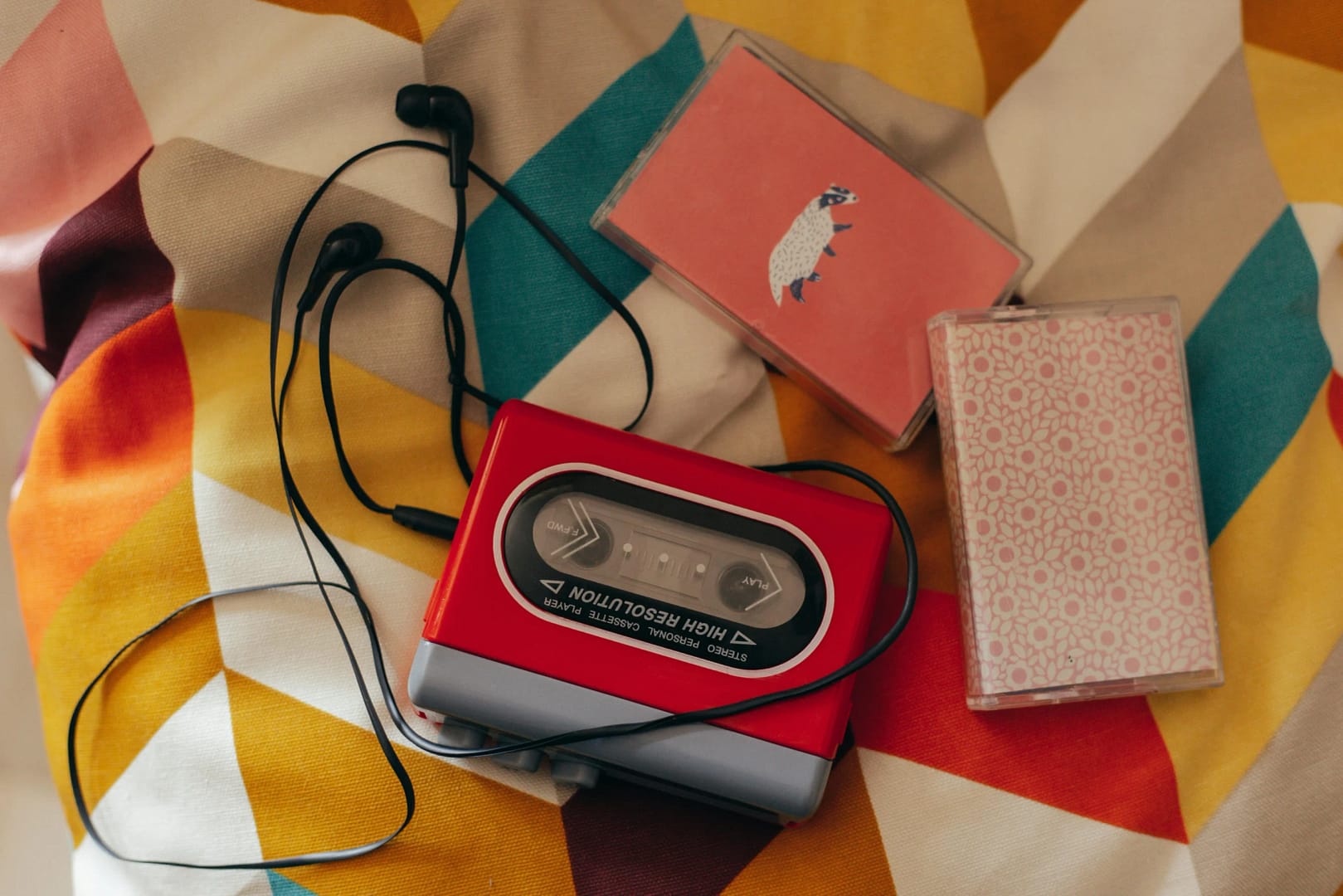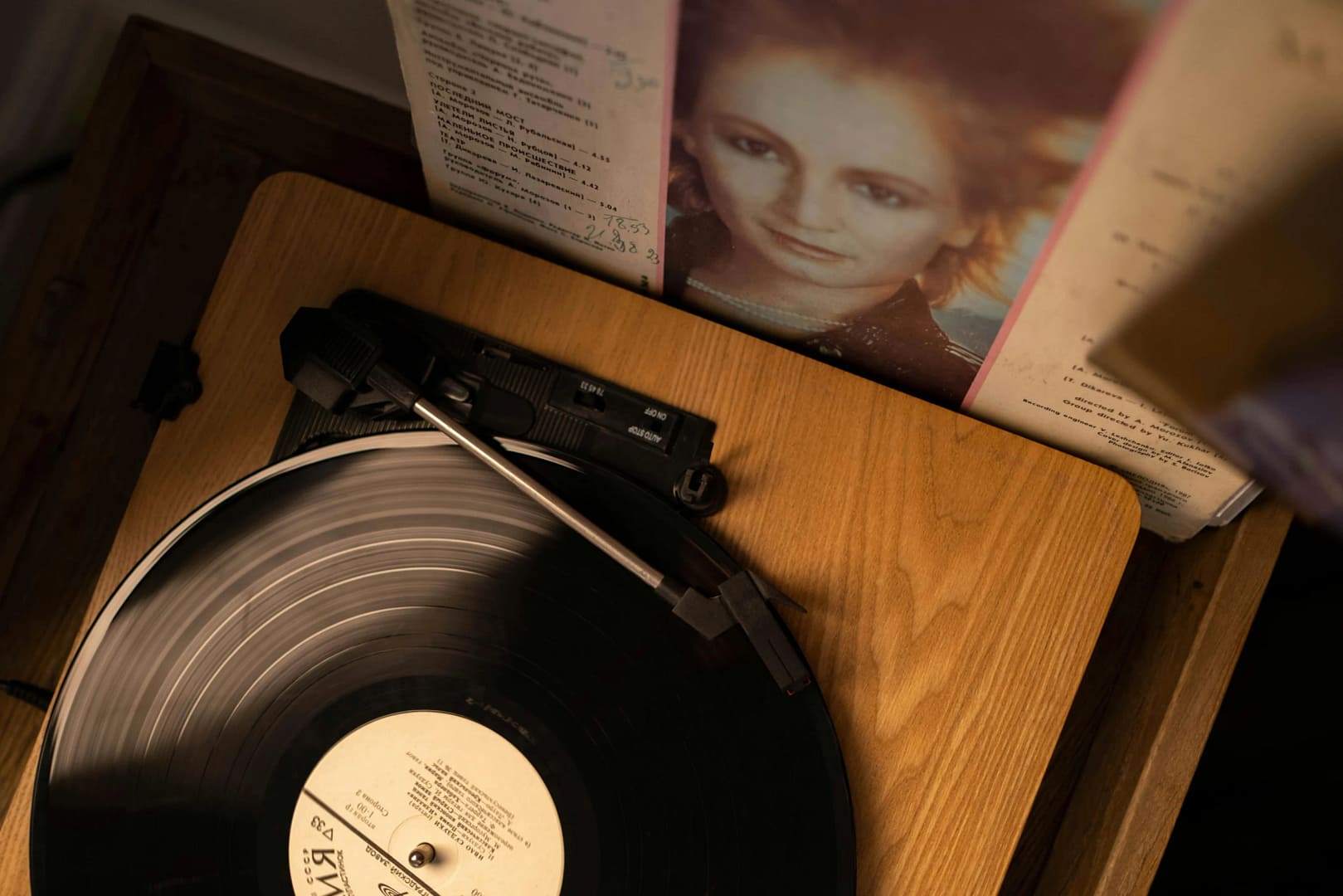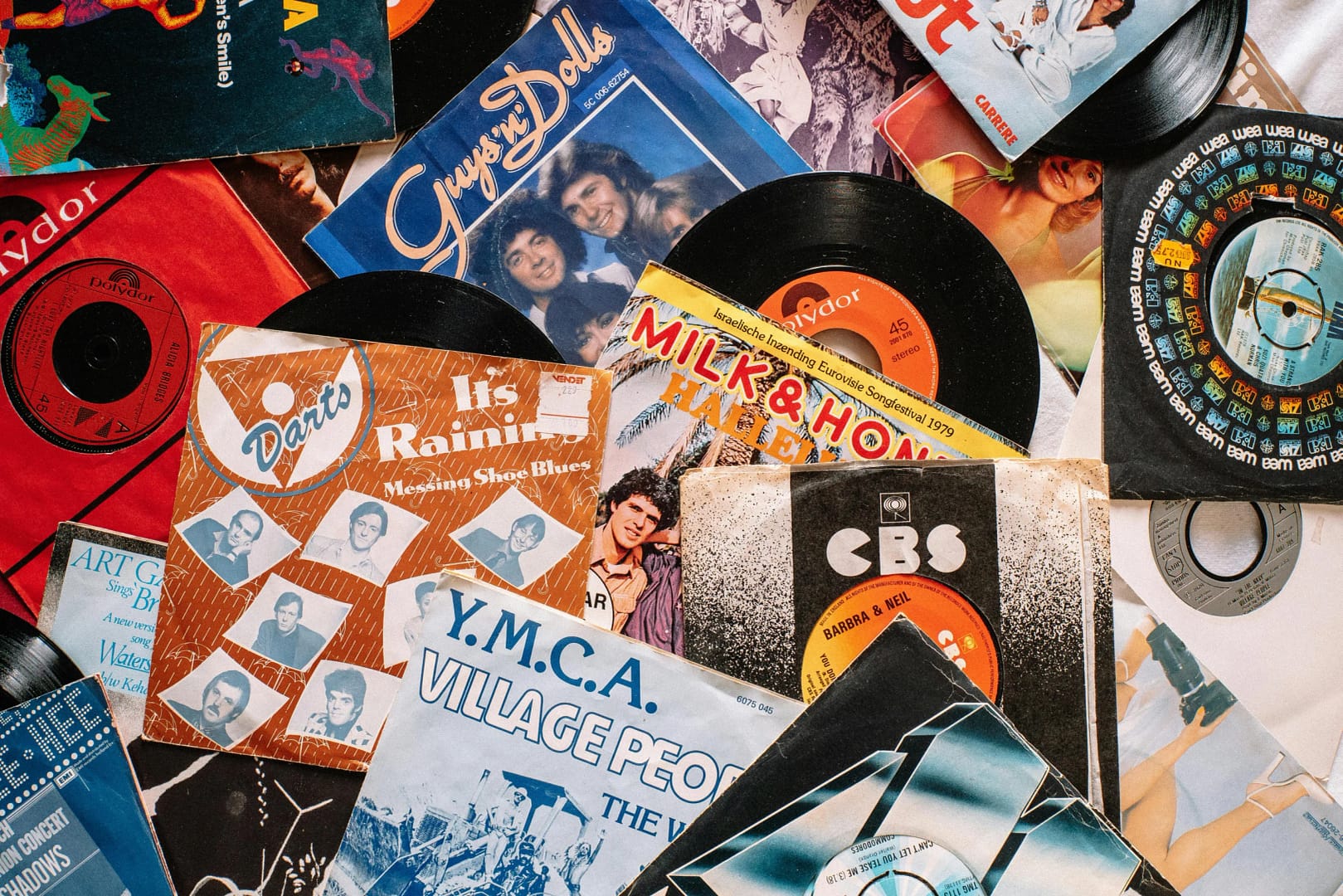Let’s explore how to store vinyl records, ensuring your beloved collection stays in tip-top shape. Nothing beats vinyl’s warmth and richness, and taking good care of your records ensures they’ll sound amazing for countless listening sessions. Proper storage isn’t just about keeping things tidy; it’s about preserving the music and the physical medium itself.
How you store them directly impacts their lifespan and playback quality. Ignoring simple rules can lead to warped discs, noisy playback, or damaged artwork – things no collector wants! Let’s break down the best practices step-by-step.
Store Your Vinyl Records Upright
This one’s non-negotiable: always, always store your records vertically, like books on a shelf. Laying them flat in stacks is a major no-no. The accumulated weight, even from just a few records, puts immense pressure on those at the bottom, leading to warping and increasing the risk of groove damage.
Standing them upright ensures the pressure is distributed evenly along the stronger edge of the record. Make sure they aren’t leaning too heavily either, as that can also cause warping over time.

Use Protective Sleeves For Safe Keeping
Your records came in sleeves for a reason! Always keep them in their inner sleeves when not playing. Those basic paper sleeves are okay, but they can shed fibers and scuff records over time. Upgrading to archival-quality, acid-free paper or poly-lined inner sleeves is fantastic for long-term protection against dust and static.
Don’t forget the outer protective jacket! To protect the beautiful artwork from scuffs, spills, ring wear (that faint circle impression), and general shelf wear, slide the entire jacket into a clear polyethylene outer sleeve. It keeps everything looking crisp and clean.
Invest In Vinyl 100 Clear Plastic Protective LP Outer Sleeves

- Keep dirt, dust, and moisture out while shielding old records, album covers, and artwork from rips, scuffs, and scratches.
Choose The Right Storage Location
Where you keep your collection is critical. Avoid places with direct sunlight, as UV rays can fade your precious album covers and the heat can warp the vinyl itself. Steer clear of heat sources like radiators, heating vents, fireplaces, or electronics that generate significant heat.
Also, avoid storing them directly on the floor, especially in basements where moisture can be an issue or in areas prone to vibrations (like right next to your giant speakers). A dedicated shelf or cabinet in a stable part of your room is ideal.
Handle and Clean Your Vinyl Records Properly
This might seem obvious, but how you handle your records matters. Always pick them up by the edges and the label area, avoiding touching the playing surfaces. Oils and dirt from your fingers can attract dust and gunk up the grooves, leading to pops and clicks.
Before putting a record away, especially if it’s been sitting out or just played, give it a quick wipe with an anti-static carbon fiber record brush. Proper cleaning helps remove surface dust. Look into record cleaning kits and methods for deeper cleaning before long-term storage or if a record is particularly grimy. Clean records are happy records!
Big Fudge Vinyl Record Cleaning Kit

- With the vinyl cleaner solvent and anti-static velvet brush, you can easily remove dust, grime, and fingerprints while still enjoying crystal-clear music.
Keep The Temperature and Humidity Stable
Vinyl records appreciate consistency. Extreme fluctuations in temperature or humidity are bad news. Ideally, you want a cool, dry environment. While specific numbers vary, think typical comfortable indoor conditions – room temperature (around 65-70°F or 18-21°C) is generally acceptable.
High humidity is a big problem, as it encourages mold growth on sleeves and labels and can even affect the vinyl over time. Basements and attics are often culprits due to poor climate control. A dehumidifier in the room might be a good investment for an extensive collection if you live in a humid area.

Keep In Mind Shelving and Record Weight
You might not realize it until you accumulate them, but vinyl records are heavy! A small crate is manageable, but shelves full of LPs add up quickly. Flimsy particleboard bookshelves that buckle under a few textbooks won’t cut it here; you need something robust.
The cube-style shelves (like the IKEA Kallax or the ClosetMaid Cube Organizer) are popular because their internal dividers add structural support. Solid wood or metal shelving units are also great options. Always check the weight capacity of any shelf you plan to use, and when in doubt, overestimate the weight of your collection.
ClosetMaid Decorative 6-Cube Storage Organizer

- Ideal for storing vinyl records, as well as accessories in optional fabric drawers
Common Mistakes When Storing Records
It’s easy to get excited about building your collection and overlook some storage basics – we’ve all been there! Knowing the common pitfalls can help you avoid them immediately, saving your precious LPs from easily preventable damage. Let’s run through some frequent slip-ups and how to sidestep them:
- The Pancake Stack: Storing records horizontally, one on top of the other. This is the biggest no-no, leading to warping and groove damage from the weight. Always store records vertically (upright) like books on a shelf.
- Sunbathing Vinyl: Placing your collection in direct sunlight or near a heat source like a radiator, vent, or even hot electronics. Heat warps vinyl, and sunlight fades covers. Find a cool, dark spot away from heat sources and direct UV light.
- Going Sleeveless (or Using Bad Sleeves): Not using inner sleeves, or using old, rough paper sleeves that shed and scratch. Skipping outer sleeves also leaves covers vulnerable. Use anti-static inner sleeves (poly-lined are great!) and protective outer polyethylene sleeves for the jackets.
- Over-Jamming Shelves: Packing records so tightly you practically need a crowbar to get one out, or leaving them so loose they lean heavily. Store records snugly enough to stand upright without leaning, but loose enough for easy removal. Use dividers or bookends on partially filled shelves.
- Ignoring the Weight: Using flimsy bookshelves not designed to hold the significant weight of vinyl records. Invest in strong, stable shelving units known to handle the load (like cube units or solid wood/metal options) and check weight limits.
How To Store Vinyl Records FAQs
Is it better to store vinyl records flat or upright?
You should always store your vinyl records vertically, like books on a shelf. Think spine-out, just like you’d arrange your favorite novels. Storing them flat, stacked one on top of another like pancakes, puts way too much pressure on the records lower down in the stack.
Is it OK to leave vinyl records in the cold?
Generally, cold temperatures are less harmful to vinyl records than excessive heat. Heat is the real enemy, quickly causing warping. So, a cool room is preferred over a hot attic. However, extreme cold isn’t ideal either, and significant temperature swings are something to avoid.
Does hanging up vinyl damage them?
While it can look super cool, hanging the vinyl record itself is generally not recommended if you care about playing it again. If you love the look, consider getting special frames designed to display the album jacket (you can leave the record safely inside or store it separately) or hang up empty jackets of records you have duplicates of or don’t plan to play.






